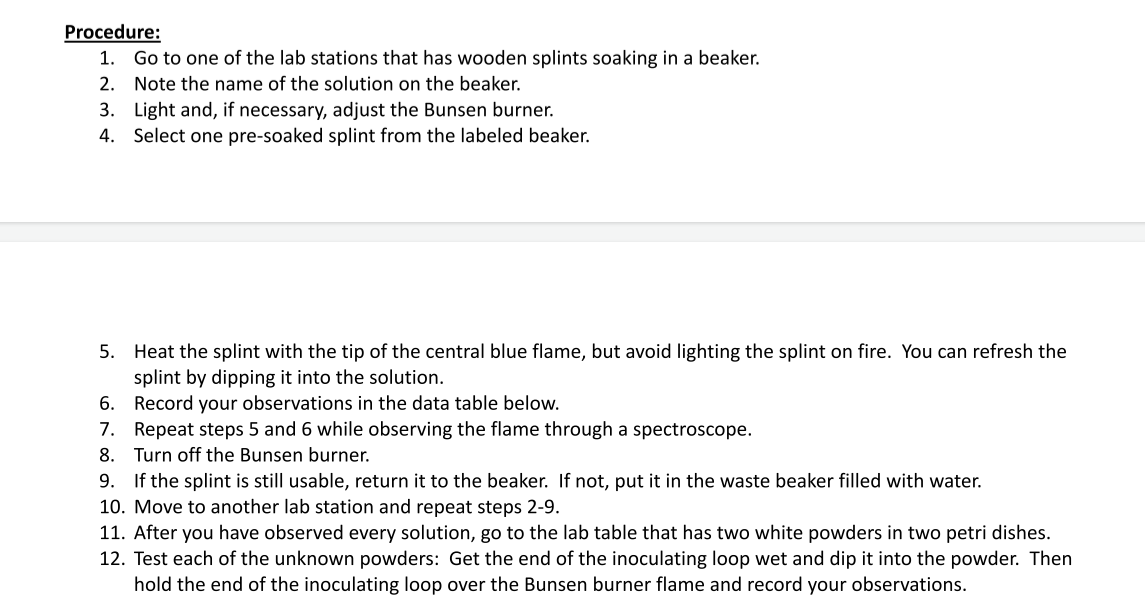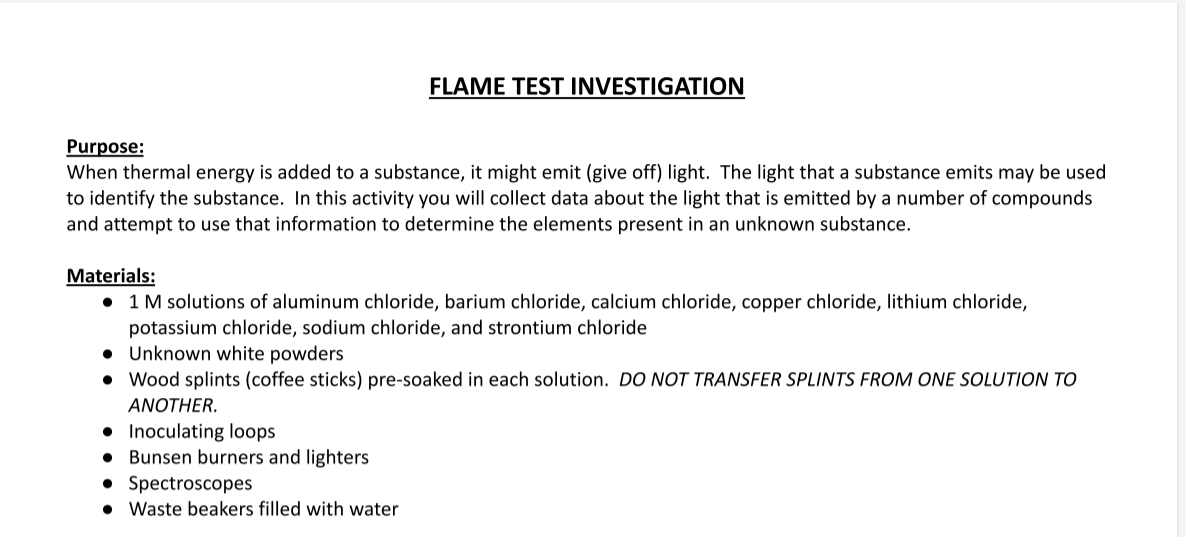So a Flame Test Investigation was conducted. In that activity, short wooden splints (sticks) were soaked in eight different chemical solutions. The splints were then held over a lit Bunsen burner one at a time, at which time each one gave off a distinctive color of light Each splint produced a dominant, vibrant color, and the color was different for each one. For example, the splint soaked in copper chloride produced a green flame and the splint soaked in lithium chloride produced a brilliant red flame. Please explain the following for me: 1. Why do chemicals give off light when heated by a Bunsen burner? 2. None of the chemicals produced “white light” similar to a common light fixture. In other words, none of the chemicals gave off the entire spectrum of visible colors. Why not? 3. Why does each chemical give off its own unique color that is different from every other chemical?
So a Flame Test Investigation was conducted. In that activity, short wooden splints (sticks)
were soaked in eight different chemical solutions. The splints were then held over a lit Bunsen burner one
at a time, at which time each one gave off a distinctive color of light
Each splint produced a dominant, vibrant color, and the color was different for each one. For
example, the splint soaked in copper chloride produced a green flame and the splint soaked in lithium
chloride produced a brilliant red flame.
Please explain the following for me:
1. Why do chemicals give off light when heated by a Bunsen burner?
2. None of the chemicals produced “white light” similar to a common light fixture. In other
words, none of the chemicals gave off the entire spectrum of visible colors. Why not?
3. Why does each chemical give off its own unique color that is different from every other
chemical?
Give thorough explanations. Also, when explaining, correctly use each of the following terms at least once:
absorb, emit, ground state, excited state, continuous, quantum leap, photon, and energy level (or
sublevel). Underline, highlight, and/or boldface each of those terms the first time you use it.
The details for the Flame Test Investigation is attached.


Trending now
This is a popular solution!
Step by step
Solved in 3 steps




